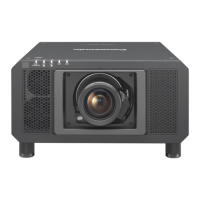
Do you have a question about the Panasonic PT-RZ12K and is the answer not in the manual?
Important safety guidelines and warnings before using the projector.
Guidelines and warnings related to projector installation locations and methods.
Measures to take for product security and preventing unauthorized access.
General warnings and advice for optimal picture quality and projector care.
Detailed explanation of the remote control buttons and their functions.
Description of all input/output terminals on the projector body.
Information on different installation modes for projector placement.
Information on image size and projection distance based on lens choice.
Tables detailing projection distances for various lenses and aspect ratios.
Formulas to calculate projection distance based on image size and lens.
Guidance on connecting external devices and cables to the projector.
Important considerations before making any cable connections.
Example setup for connecting devices via DIGITAL LINK.
Step-by-step guide for powering the projector on and off safely.
Initial setup procedures including focus adjustment and language selection.
Configuring operating parameters like operating mode and light output.
Setting the projector's projection method based on installation.
Basic steps for projecting an image, including signal selection and adjustment.
Methods for adjusting lens position for optimal image clarity and placement.
Specific procedures for adjusting the fixed-focus lens for optimal image.
Detailed instructions on using the remote control for various projector functions.
How to navigate and use the projector's on-screen menu system for settings.
Step-by-step guide for interacting with the projector's menu interface.
Picture settings including mode, contrast, brightness, color, and tint.
Position settings for shift, aspect ratio, zoom, and geometry.
Advanced settings for digital cinema reality, blanking, and input resolution.
Advanced menu options like clamp position, edge blending, and frame response.
Settings for color matching, screen correction, auto signal, and input options.
Display options like image rotation, back color, startup logo, and uniformity.
Core projector setup options including ID, projection method, and operation settings.
Security features like password protection and device control settings.
Adjustments for image quality including mode, contrast, brightness, color, and tint.
Switching between different picture modes for optimal viewing.
Adjusting the color contrast of the projected image.
Adjusting the dark (black) parts of the projected image.
Adjusting the color saturation of the projected image.
Adjusting the skin tone in the projected image.
Adjusting color temperature for bluish or reddish image tones.
Adjusting the sharpness of the projected image.
Automatic light adjustment for optimal contrast.
Settings for adjusting image position, aspect ratio, zoom, and geometry.
Moving the image position vertically or horizontally.
Adjusting the image size using the zoom function.
Correcting various types of distortion in a projected image.
Adjusting trapezoidal or curved image distortion.
Advanced image processing settings like digital cinema reality and blanking.
Seamlessly overlapping multiple projector images by adjusting brightness.
Settings for color matching, screen correction, auto signal, and input options.
Correcting color differences between projectors when using multiple units.
Setting backup function for seamless signal switching during disruption.
Core projector setup options including ID, projection method, and operation settings.
Setting the projector's projection method based on installation.
Configuring operating parameters like operating mode and light output.
Selecting operating modes like NORMAL, ECO, and LONG LIFE.
Adjusting the maximum brightness level.
Adjusting the brightness of the light source.
Setting the operation of the brightness control function.
Security features like password protection and device control settings.
Enabling or disabling the security password prompt.
Enabling/disabling button operations on the control panel and remote.
Specific instructions for enabling/disabling individual buttons.
Network configuration for Digital Link, Art-Net, and web control.
Initial network configuration before using network functions.
Setting up network control methods like web control and PJLink.
Information on network connectivity and supported control software.
Displays detailed status of projector components like power, temperature, and runtime.
Information on error and warning codes, with troubleshooting measures.
Lists of specific components that have failed and require attention.
Lists of warning conditions such as high temperatures or filter issues.
Basic projector controls like power, shutter, input selection, and system settings.
Advanced projector controls including sub memory, projection method, and test patterns.
Configuring network settings such as IP address, subnet mask, and DNS.
Configuring E-mail settings for sending alerts and reports.
Explains indicator lights for problems and their meanings.
Procedures for cleaning and replacing projector parts like the air filter.
Cleaning the outer case and lens front surface.
Information on the air filter unit, including cleaning and attachment.
Procedures for replacing the air filter unit.
A guide to diagnosing and resolving common projector problems.
Information on projector error and warning codes displayed by the self-diagnosis system.
Comprehensive list of video signals and resolutions supported by the projector.
Table specifying compatible 3D video signals for projection.
Detailed list of projector terminals and their specifications.
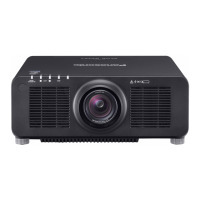
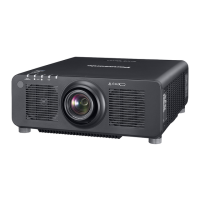
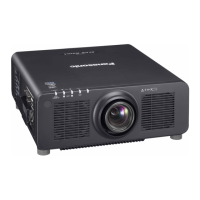


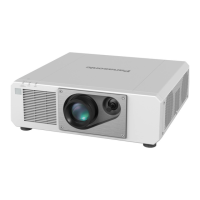
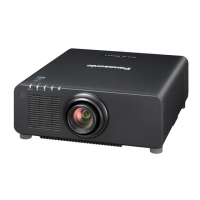
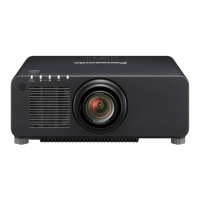
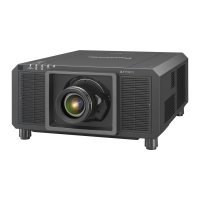

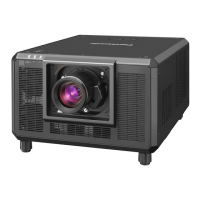
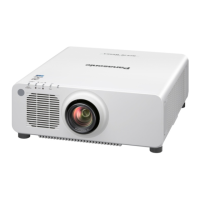
